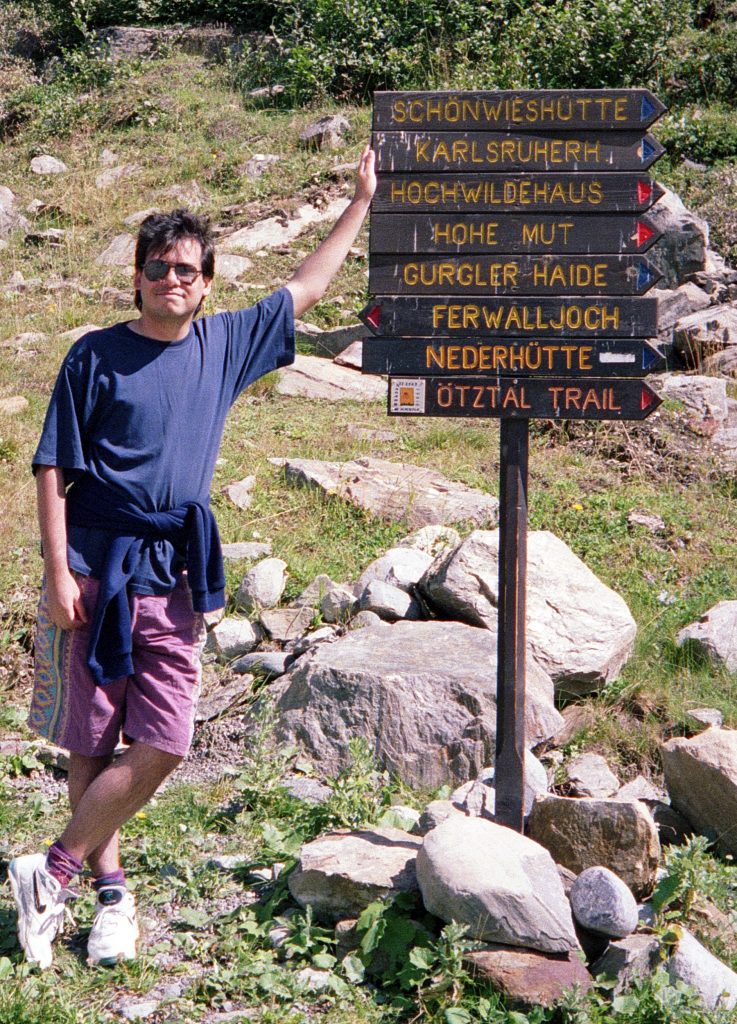With time on my hands (and you on my mind ((It’s a song. Look it up.))) I’ve started scanning in the 35mm negatives I mentioned in my original Fails from the darkroom post from last year. It’s been lovely scanning in photos of my (our) trip to Obergurgl in 1994. I’d love to go back one day, it’s a beautiful part of the world to go walking in. The schnapps is quite good as well. Don’t worry, I don’t have these shorts any more… or those glasses… or those legs.
But, as predicted, I’m coming across missing strips of negatives, presumably lost when I’ve had reprints done. They will have been in the paper sleeve inside the card wallet which was then disposed, probably only in the last few years. Bummer. Especially the ones where I don’t know what was on which strip.
This has meant looking at the photograph albums and trying to work out what’s not there any more, which is easier said than done as they’re in a plastic box at the bottom of a pile of other plastic boxes. But it looks as if I’m missing some pretty ‘meaningful’ photographic memories.
There’s one of Emma from almost 17 years ago. There’s one of Tony biting into a Cornish Pasty at Euro 96 (it’s funnier than it sounds). A couple of holiday snaps have gone walkabout as well. There are 6” x 4” prints but not the original negatives, and I could just scan in the prints… but it’s not that easy.
Peeling the print out from the album and slapping it on the scanner sounds easy enough, but it slides around the glass plate as soon as you close the lid, the resolution is about one-quarter that of the negative and – most importantly – most prints are glossy. That means they pick up slight reflections from the light of the scanner as it passes by.
There is a solution. Of course there is! The key phrase to type into Amazon is “rostrum camera”.
A rostrum camera – and I apologise if I’m preaching to the cognoscenti – is a fixed camera pointing straight down onto a backboard, onto which flat images are placed for filming. Also, cel and other 2D animation. Also, you can connect the backboard to a couple of motors and create panning shots. If you’ve the money for a really good rig, that it. I haven’t.
So that sounds simple enough. Spend £35, get the rig, attach my small digital camera to it and away we go. Except… well, for one thing, how do I keep the prints flat? They might curl up after being in an album for 20-odd years. No use placing a sheet of glass over the top, it’ll reflect the camera back.
And even they are flat, how do I light them evenly? How do I keep them square in front of the camera lens?
Then again, this is me we’re talking about. You know I love this kind of problem.

